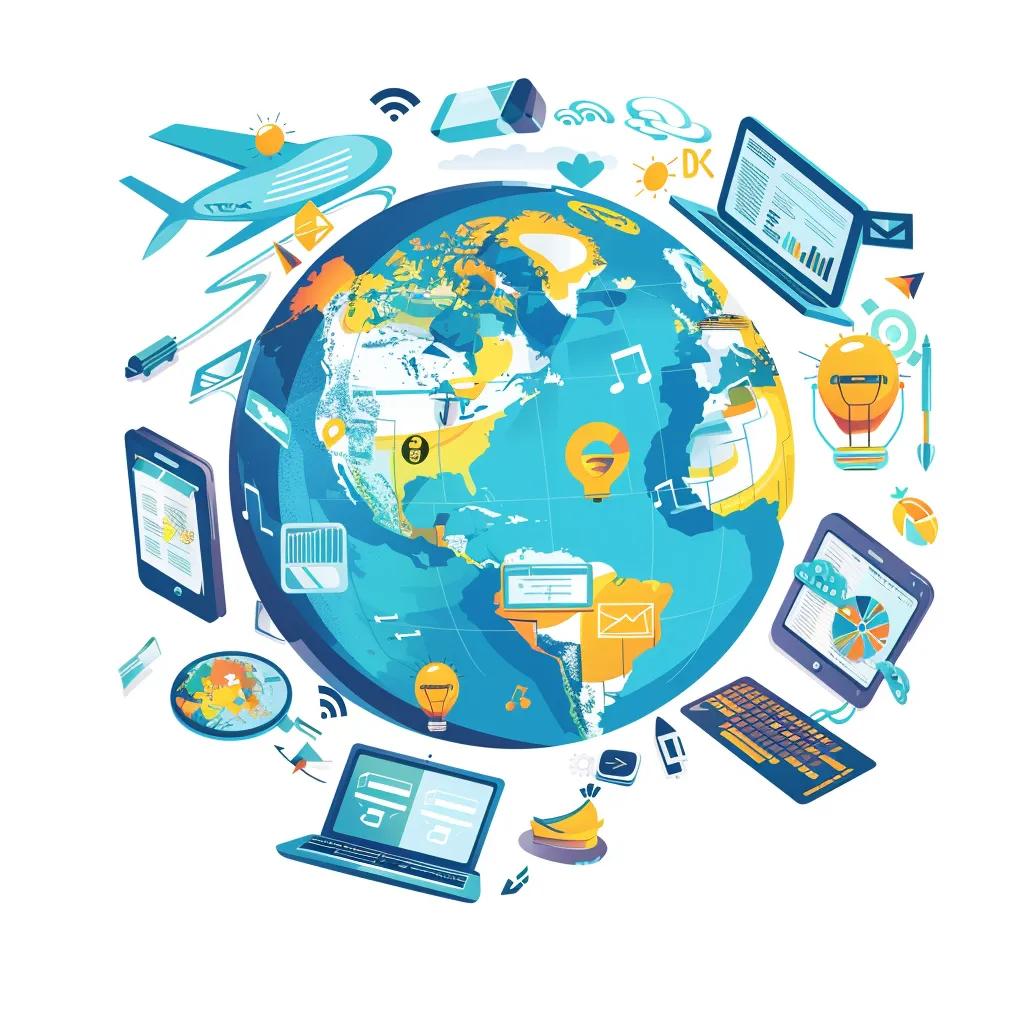Why eLearning Translation Services Are Essential for Global Training

Global teams miss crucial training outcomes when language barriers go unaddressed. eLearning translation services convert and adapt online courses into multiple languages and cultural contexts, ensuring every learner can engage fully. In this article, you will discover how localization expands global reach, boosts engagement and retention, drives ROI and compliance, overcomes technical and cultural challenges, follows a proven workflow, leverages advanced tools, and guides you to select the right translation partner. By integrating elearning translation services, organizations unlock talent potential and maintain consistent training standards worldwide.
How Do eLearning Translation Services Expand Global Reach and Accessibility?

eLearning translation services enable organizations to deliver training to diverse audiences by converting content and interfaces into target languages while preserving instructional design. This capability extends market penetration and broadens learner inclusivity.
When courses appear in a learner’s native language, comprehension rises and dropout rates fall. This accessibility paves the way for higher adoption across regions and cultures, setting the stage for deeper engagement and better retention.
Why Is Breaking Language Barriers Crucial for Global Training?
Breaking language barriers ensures that terminology, instructions, and assessments resonate with learners’ linguistic frameworks. By translating key terms and idioms, organizations remove confusion, promote clarity, and support better performance. Clear language adaptation directly improves learning efficiency and prepares employees to apply skills in real-world contexts.
This linguistic bridge leads naturally to strategies for attracting and retaining a globally distributed workforce.
How Do eLearning Translation Services Attract and Retain Global Talent?
eLearning translation services attract and retain talent by offering personalized learning experiences in employees’ native tongues. When organizations invest in localized training, they demonstrate cultural respect and career support, boosting morale and loyalty. Native-language instruction also speeds onboarding, reduces errors, and fosters an inclusive company culture that encourages high performance.
Engaged global talent then contributes to measurable market growth, which we explore next.
What Are the Market Growth Trends Supporting eLearning Localization?
eLearning localization aligns with rapid industry expansion and increasing training budgets worldwide. Organizations that prioritize multilingual content gain competitive advantages in emerging markets and talent acquisition.
High market growth and retention improvements underscore why translating elearning content is no longer optional. Next, we examine how localization elevates engagement and retention for learners everywhere.
Market Growth in eLearning
The global eLearning market is projected to reach $457.8 billion by 2026, highlighting the significant growth and investment in online learning platforms. This expansion underscores the increasing importance of eLearning translation services to reach a global audience and capitalize on market opportunities.
Global Market Insights, Global E-Learning Market Size, Industry Analysis Report (2020)
This research supports the article's claim about the rapid expansion of the eLearning market and the need for localization.
What Are the Key Benefits of eLearning Translation for Learner Engagement and Retention?
Localized eLearning improves comprehension, relevance, and completion rates by tailoring content to learners’ language and cultural expectations. Native-language modules create comfortable learning environments that foster interaction and knowledge retention.
How Does Native Language Learning Improve Learner Engagement?
Native-language instruction engages learners by aligning course vocabulary, examples, and scenarios with familiar contexts. This alignment reduces cognitive load and encourages active participation. As understanding deepens, learners interact more with quizzes, simulations, and discussions, driving better outcomes.
Enhanced engagement then supports long-term retention, which we discuss in the next subsection.
Why is Cultural Relevance Important in eLearning Localization?

Cultural relevance goes beyond translation by adapting imagery, scenarios, metaphors, and compliance references to local norms. When learners see familiar settings and culturally appropriate examples, they connect emotionally with the material and trust the training provider. This trust amplifies motivation and completion rates across diverse audiences.
Cultural adaptation also influences memory retention, as explained below.
How Does Localized Content Enhance Knowledge Retention?
Localized content embeds concepts in contexts that learners recognize, strengthening memory encoding and recall. By presenting examples tied to local practices and industry regulations, learners form durable mental models. Studies indicate retention rates can jump from 25 percent to up to 60 percent when training is delivered in native languages.
Benefits of eLearning Localization
Studies show that learner retention rates can increase significantly, from 25% to up to 60%, when training is delivered in native languages. This improvement is attributed to the enhanced comprehension and cultural relevance that localized content provides, leading to better knowledge retention and application.
Training Industry, The Benefits of eLearning Localization (2022)
This citation supports the article's discussion on how localized content enhances knowledge retention.
With better retention secured, organizations can measure clear returns, which we explore in the next section.
How Do eLearning Translation Services Drive Business ROI and Ensure Compliance?
Investing in eLearning translation delivers quantifiable cost savings, risk mitigation, and brand enhancement. Multilingual training reduces rework, supports global audits, and improves regulatory adherence, translating into strong ROI.
ROI of eLearning Translation
Localized training can lead to substantial cost savings, with the average cost per learner decreasing from $1,200 to $900, representing a 25% savings. Furthermore, compliance incident rates are reduced from 5% to 1% with localized training, demonstrating the financial benefits and risk mitigation associated with eLearning translation.
Association for Talent Development, The ROI of Translation in Learning and Development (2023)
This research supports the article's claims about the ROI of eLearning translation services.
How Does Localization Ensure Regulatory Compliance in Global Training?
Localization integrates region-specific legal requirements, safety guidelines, and certification protocols into course materials. By adapting assessments and documentation to local laws, organizations avoid penalties and ensure workforce qualifications meet industry standards. This compliance framework protects both employees and the corporate reputation.
A robust compliance strategy also reinforces brand reputation and inclusivity, as covered next.
How Does eLearning Translation Enhance Brand Reputation and Inclusivity?
Delivering training in learners’ native languages signals cultural awareness and corporate responsibility. Inclusive programs foster brand loyalty among clients and employees, as organizations demonstrate respect for diversity. Positive brand perception then leads to higher partner and customer engagement globally.
Having covered benefits and ROI, we turn to the obstacles organizations must overcome.
What Are the Common Challenges in eLearning Translation and How Can They Be Overcome?
What Linguistic and Cultural Complexities Affect eLearning Translation?
Localized courses must adapt idioms, humor, and industry jargon without losing instructional intent. Translators manage glossary creation, style guides, and cultural audits to maintain consistency. Without these practices, content risks misinterpretation or offense, undermining learning objectives.
Resolving these challenges sets the foundation for handling technical hurdles, as detailed next.
How Do Technical Issues Impact Multimedia and Interactive Content Localization?
Interactive modules, videos, animations, and infographics require careful synchronization of voiceovers, text overlays, and timing. File formats, subtitle integration, and screen size variations can disrupt user experience if not managed via standardized workflows and tools. Addressing these issues ensures seamless multimedia localization.
What Quality Assurance Practices Ensure Accurate eLearning Translation?
A multilayered QA process—comprising linguistic review, functional testing, and pilot learner feedback—guarantees precision. Terminology checks, style compliance, and cultural review are followed by LMS integration tests and user acceptance trials. This rigorous approach prevents errors and ensures consistent delivery across languages.
With challenges conquered, we outline the proven translation workflow.
What Is the Step-by-Step Process of eLearning Translation and Localization?
How Is Content Prepared for Effective Translation and Localization?
Content preparation involves extracting all text, audio scripts, graphics, and metadata. Instructional designers map out language placeholders, translatability checks, and style guide requirements. Early preparation sets the stage for accurate translation and efficient project management.
This readiness leads directly into the core workflow stages detailed next.
What Are the Key Stages in the Translation and Localization Workflow?
The main stages include:
- Translation: Expert linguists convert text and scripts into target languages.
- Localization: Cultural adaptation of examples, images, and voice tone.
- Multimedia Integration: Insertion of subtitles, voiceovers, and localized graphics.
- Functional Testing: Verification of navigation, formatting, and interactivity.
- Final Review: Stakeholder sign-off and pilot testing with target learners.
These stages culminate in integrated QA practices covered in the following section.
How is Quality Assurance Integrated into the eLearning Translation Process?
Quality assurance runs in parallel with localization steps, with iterative reviews after each deliverable. Linguistic QA checks translations, while functional QA tests platform compatibility. User acceptance testing with native speakers confirms both accuracy and cultural fit before final deployment.
Once QA is complete, courses are ready for LMS integration and testing, as explained next.
How Are Translated Courses Integrated and Tested in Learning Management Systems?
Translated assets are uploaded to the LMS and configured for language-specific tracks. Test enrollments validate content delivery, assessment scoring, and reporting accuracy. Error logs and learner feedback inform final adjustments, ensuring a smooth launch. Successful integration then supports uninterrupted global training operations.
With processes in place, organizations leverage specialized tools to boost efficiency, as described in the next section.
Which Technologies and Tools Enhance eLearning Translation Efficiency?
How Do Translation Management Systems (TMS) Streamline Localization?
A TMS centralizes source files, integrates terminology databases, and tracks project milestones. Automated workflows assign tasks, manage version control, and deliver TM-powered translation suggestions. This centralized platform accelerates consistency and project transparency.
Efficient TMS usage complements AI-driven solutions, as detailed next.
What Role Do AI and Machine Translation Play in eLearning Localization?
AI-powered machine translation (MT) provides rapid first-draft conversions, which are then refined through post-editing (MTPE). Neural MT engines learn from glossaries and style guides to improve accuracy over time. This hybrid approach balances speed and quality for large-scale projects.
Human expertise remains critical for nuance, particularly in multimedia, which we cover next.
How Are Voiceover and Subtitling Tools Used in eLearning Translation?
Voiceover tools synchronize translated scripts with native-speaker recordings and lip-sync timing. Subtitling platforms automate text placement and timing metadata for videos. These tools support batch processing and quality checks, ensuring that audio-visual content maintains engagement and clarity across languages.
Having explored the technology landscape, we now focus on selecting the ideal translation partner.
How Do You Choose the Right eLearning Translation Partner for Global Training?
What Expertise and Quality Standards Should You Look for in a Translation Provider?
Seek providers with:
- Certified Linguists: Native speakers with instructional design experience.
- ISO or ASTM Certifications: Quality management standards in translation.
- Industry Specialization: Knowledge of sector-specific terminology.
- Cultural Consultants: Experts who validate local relevance.
These criteria ensure accurate, culturally appropriate training that aligns with your objectives.
How Does Technology Adoption Influence Translation Service Quality?
Providers using modern TMS, AI-assisted workflows, and cloud-based collaboration platforms achieve faster turnaround times and higher consistency. Technology integration also supports scalable glossary management and real-time status tracking, which enhances transparency and reduces errors.
Advanced tools make project management efficient, which leads to best practices for overseeing translations.
What Are the Best Practices for Managing eLearning Translation Projects?
Effective project management includes:
- Clear scope definitions and style guides.
- Regular milestone reviews and stakeholder checkpoints.
- Centralized asset repositories and version control.
- Pilot testing with representative learners.
- Post-launch analytics and improvement cycles.
These practices maintain quality, control costs, and ensure on-time delivery for global training initiatives.
How Can Case Studies Demonstrate the Impact of Professional eLearning Translation?
Case studies illustrate real-world results, such as increased completion rates, higher productivity, and compliance improvements. For example, a multinational company achieved a 20 percent boost in workforce performance after localizing its leadership development program. Demonstrating these successes builds confidence and guides decision-makers toward proven solutions.
With the right partner, every stage of localization leads to seamless global training delivery.
Lionizing language diversity through professional translation services empowers organizations to engage, retain, and develop a truly global workforce. Investing in elearning translation not only optimizes learning outcomes but also delivers measurable ROI, ensures compliance, and strengthens brand reputation across borders. As digital learning evolves, partnering with a specialized provider becomes a strategic imperative for future-ready training initiatives.








